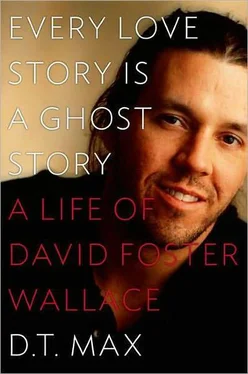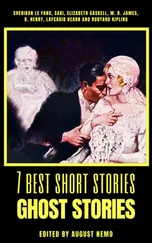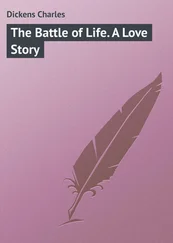Lenore comes by this anxiety through her genes: her great-grandmother and namesake, Lenore Beadsman, now in her nineties and in a local nursing home, studied with Wittgenstein, from whom she adopted his radically potent idea of the independence of language. 12Says Rick:
She has, from what little I can gather, convinced Lenore that she is in possession of some words of tremendous power. No, really, Not things, or concepts. Words. The woman is apparently obsessed with words. I neither am nor wish to be entirely clear on the matter, but apparently she was some sort of phenomenon in college and won a place in graduate study at Cambridge…. There she studied classics and philosophy and who knows what else under a mad crackpot genius named Wittgenstein, who believed that everything was words. Really. If your car would not start, it was apparently to be understood as a language problem. If you were unable to love, you were lost in language. Being constipated equaled being clogged with linguistic sediment. To me, the whole thing smacks strongly of bullshit.
He adds, “Words and a book and a belief that the world is words and Lenore’s conviction that her own intimate personal world is only of, neither by nor for, her. Something is not right.”
At novel’s beginning, the older Lenore has disappeared from her nursing home, taking with her many of the other residents. She has left behind a clue, a drawing of a head bursting, as a guide to her whereabouts. Lenore pursues her forebear, Oedipa Maas — like, as she tries to figure out where her great-grandmother went and how this relates to her ontological unease. To accompany Lenore, Wallace gave her a parrot based on his thesis adviser Dale Peterson’s cockatiel, now reimagined as the horrible bird Vlad the Impaler, who quotes scripture and bits of dirty conversation he overhears.
There is another character of importance to Wallace, LaVache Stonecipher. Lenore’s brother, LaVache is a depressive and brilliant Amherst undergraduate, who helps other students with their schoolwork in return for drugs that he hides in his artificial leg. (Wallace claimed that he traded thesis help for pot in school.) LaVache is the cleverest character in the book, smart enough to put Wittgenstein to his own uses. He, for instance, calls his phone “a lymph node,” so that when his father, whom he wishes to avoid, asks if he has a phone, he can honestly say no. Unlike his sister, Lenore, LaVache is protected by his irony and his distance, but simultaneously he is trapped, marginal, without a center: he literally barely has a leg to stand on. He exudes what Wallace would later call “the ‘moral clarity’ of the immature.” “No one expects me to be anything other than what I am,” LaVache says, “which is a waste-product, slaving endlessly to support his leg.” It is hard not to see in him a foreshadowing of Wallace’s soon to be deepening problems. The novel’s title came from a phrase Sally Wallace remembered from her grandmother, who when she would encourage her children to eat an apple would say, “Come on, it’s the broom of the system.” With its overtones of Wittgenstein, the image delighted Wallace.
If Wittgenstein was the obvious philosophical point of departure for Wallace’s book, the literary influences were even clearer. Wallace had a technical mind, and in Broom he reverse-engineers the postmodern novels he was enjoying. The overwhelming influence is Pynchon: from him come the names, the ambience of low-level paranoia, and the sense of America as a toxic, media- and entertainment-saturated land. He took the flat, echoing tone of his dialogue from Don DeLillo, whose novels he had been reading while working on the book. (One night a friend who did part-time work as an Amherst security guard bumped into him at his switchboard working his way through Ratner’s Star. ) 13The minute, flirtatious appraisal of women seems borrowed from Nabokov, himself a teacher of Pynchon. The farrago of forms — stories within stories, transcripts of meetings, duty logs, rock medleys, and madcap set pieces — comes from Pynchon too, as well as from other postmodernists like Barthelme and John Barth. When Lenore points out that East Corinth, the suburb of Cleveland she lives in, is meant to look like the outline of Jayne Mansfield seen from the air, it is hard not to think of Oedipa Maas getting her first look at San Narciso, the imaginary city near Los Angeles, which, she muses, resembles a transistor radio circuit board with its “intent to communicate.” 14
Pynchon saturates the book’s DNA: he is in the atmosphere of not quite serious corporate intrigue, in the meetings in obscure bars, and the psychiatrists more in need of help than their patients (Dr. Jay shares Lot 49’s Dr. Hilarius’s “delightful lapses from orthodoxy”), so much so that when Wallace gave his manuscript to McLagan, he read a few pages and returned it; he did not have time for a Pynchon rip-off. And yet McLagan was too dismissive. The book is original. It differs from Pynchon in delicate but pervasive ways. Pynchon’s Oedipa Maas is emotionless, surfing above dysfunctional America with a light 1960s sense of indestructibility. By contrast Wallace’s Lenore—“a beautiful, bright, witty, largely joyful albeit troubled and anyway interestingly troubled” girl, as Dr. Jay describes her — strives for contact. 15There is an ache in Broom . If on the surface even lighter than the Pynchon novel, just a bit below it exudes discomfort and yearning. Wallace’s anxiety, his fear of a world in which nothing is rooted, and his intense attempts to understand what women want and how to form a relationship with them (“How do you know when you can kiss her?”) are apparent. The borderline between the self and the other preoccupies: Rick Vigorous’s penis is too small to have sex with Lenore; another character, Norman Bombardini, is so vast he literally tries to eat her, while Lenore herself almost seems as incorporeal as her great-grandmother. The bizarre up-and-down of Wallace’s Amherst life is there too, the school that for Wallace, as for Vigorous, was “a devourer of the emotional middle, a maker of psychic canyons, a whacker of the pendulum of mood with the paddle of Immoderation.” Wallace would in future years dismiss the book as written by “a very smart fourteen-year-old,” but that is unfair: this adolescent is not just smart; he is attempting to communicate.
In the late spring of 1985 Dale Peterson and the other members of Wallace’s thesis panel gave Broom an A-plus, and Wallace matched Costello double summa for double summa. But he had also discovered something more important about himself — he knew now what he wanted to do. Fiction held him as no other effort had; it took him out of time and released him from some of the pain of being himself. He told his roommate that when he was writing, “I can’t feel my ass in the chair.” On a visit to campus the spring of Wallace’s senior year, Costello bumped into Kennick walking across the college green. “Costello? Wallace’s friend, right?” The professor commanded, “Tell him he must study philosophy.” Costello passed on the message to Wallace, who shrugged it off.
During his senior year Wallace applied to creative writing programs. It never occurred to him that he could just go somewhere and write: he came from academia and believed in the classroom. Moreover, he knew with his shaky mental state that he needed health insurance, and to get health insurance you needed a job, and the only job a writer could do was to teach, and to teach you needed an MFA.
He sent out a chapter from Broom along with his stellar transcript and his long list of prizes. He was accepted at several programs, among them the University of Iowa Writers’ Workshop and the writing program at the University of Arizona. Iowa was the most prestigious school in the country — Wallace was keenly alert to this, telling Costello it was the “Harvard Law of MFAs”—but it was also the center of the sort of realist fiction that interested him least. 1In contrast, Arizona sent him a tempting letter. “Instead of the ‘guru’ system (which tends to foster a ‘school’ of writing, and a tendency of the student to write for or like one master),” the director, Mary Carter, wrote, “we encourage diversity.” In other words, at Arizona Wallace wouldn’t have to come out writing like John Cheever, as he would almost anywhere else; he could follow his own voice. The program, though small, had a national reputation and the offer of admission came with an $8,000 scholarship. When the Iowa Workshop told Wallace he would have to pay full tuition, the deal was done. He wrote the Workshop with the news. “I don’t have any money and need to go where I can get some financial aid,” he reminded them pointedly. McLagan told him he was lucky to be heading west. The desert was beautiful, the girls extraordinary. At his Amherst graduation Wallace received several more academic prizes, bringing his total awards to ten, likely an Amherst record.
Читать дальше












